Somerset House is currently hosting an exhibition on the popular comic strip "The Peanuts", famous for its Charlie Brown, Snoopy the dog, and Woodstock the bird characters. Developed by Charles Schultz, this comic has been running in one form or another for nearly eighty years. A special exhibition featuring the strip at Somerset House in London is currently taking place until March 3.
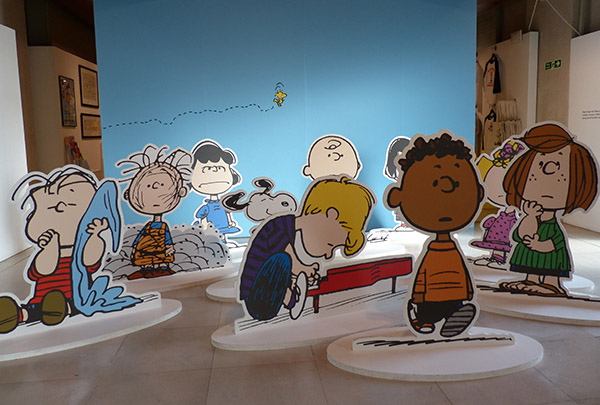
"Merry Christmas, Charlie Brown" and "It's the Great Pumpkin, Charlie Brown" are two of the seasonal cartoons that I would watch every Christmas and Halloween; there were also a Valentine's Day and an Easter one and a series of cartoons. Now, I personally never understood why it was as popular as it was (and I am sure that I was not the target audience), but my father is a huge fan of the strip and has collected the merchandise. He was born on the same day the strip was created/first published. After my visit to the exhibition last month, I now have a better understanding of the comic strip, and as for its appeal, the characters and catch phrases are so well-known that it actually does deserve its place.
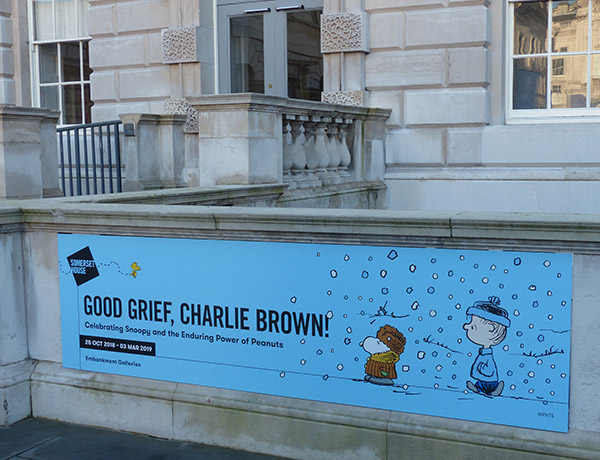
I think that although it started its life as a comic strip, it is now being marketed more to children to survive and carry its legacy. A new film was released a couple of years ago, and this was very much a children's film. But, even though it is a children's film, it kept the formulas used in the comic strip to appeal to an older audience. I believe that the addition of Snoopy and Woodstock makes it more accessible to children, and this marketing to children certainly started by the time I was a child and watched the cartoons. (I also had one of the Snoopy Snow-Cone machines that I got for Christmas when I was very young, which really just allows you to hand-crush ice into a cup!)

The exhibition explores how "The Peanuts" strip became popular and how it dealt with issues such as war, racism, and feminism. In its most popular time, the readers of the comic strip were 355 million, according to a note at the exhibition, and it was syndicated in 2,600 newspapers in 75 countries. Charles Schulz had created 17,897 strips before he died in 2000, and a lot of the events relate to him. All of the notes in this post relate to what I read at the exhibition.
Charles Schultz was born in St. Paul in 1922 to immigrants; his father was a German barber during the Great Depression, and his mother came from a large Norwegian family that encouraged him to not aspire to success or stand out and to accept his fate in a hard world. Schultz was nicknamed "Sparky" when he was two days old, and this name came from a racehorse in the "Barney Google" comic strip; his father instilled the love of comics into him as they'd read them together.
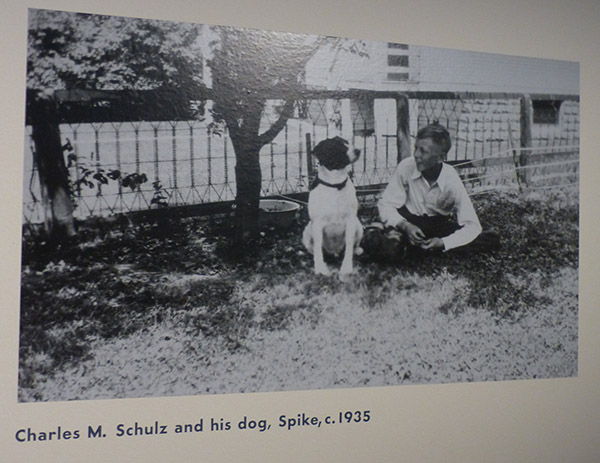
When he was 13, the family got a dog that they named Spike. The dog was very intelligent, mischievious, and had a large personality, and it came to become the model in personality and in markings for the fictional Snoopy. The name came about as a tribute to Schultz's mother because she had said that if they ever had another dog, it should be called "Snoopy". Apparently, the dog could understand over 50 human words.
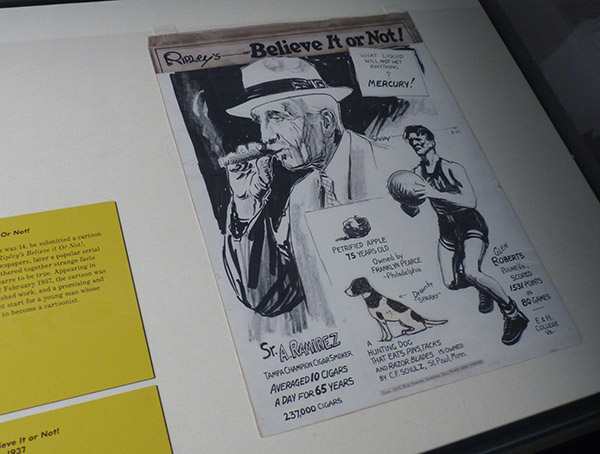
Schulz's first published work was in 1937 for "Ripley's Believe it or Not!", which was an insert and magazine that published hard-to-believe facts. Schultz illustrated and posted facts about Spike the dog.
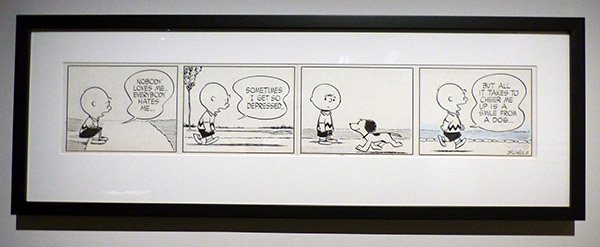
Sport is what connected Scultz to make friends, and he enjoyed ice skating in winter when his father would put water in their garden to make a home-made ice rink for him and his friends to play hockey on.
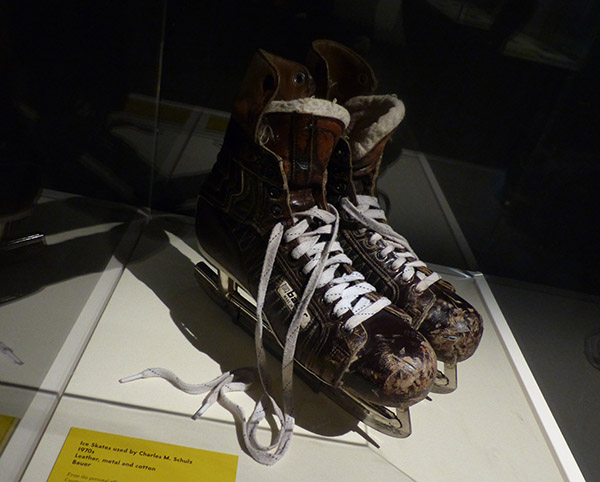
Schultz's father paid for him to go to art school, and he was then drafted into the army for a short time. He got his big break with a syndicate from New York who saw his "Li'l Folks" comic strip, which was a strip featuring children, that he had published locally and was trying to get more exposure from. Because that name was already copyrighted by another cartoonist, the syndicate called his work "Peanuts", which he disliked. The "Peanuts" strip was first syndicated in 7 newspapers on October 2, 1950.

One of the subjects that Scultz writes about a lot is love and unrequited love. "The Little Red-Haired Girl" is based on a real person. In this case, the girl was a colleague of Scultz's at Art Instruction School, and he dated her for three years in the 1940s, but she turned down his marriage proposal. A lot of the names of the characters came from friends, such as Linus, Frieda and Schroeder.

"The Peanuts" strip immortialised new phrases and words. "Aaugh!", "Good Grief", "Rats!", and "Blockhead" are a few of the words Scultz created and used daily. He was also the first to treat text denoting sounds in a different mannor, such as "Z" for sleep, "Whap!", and other phrases such as "sigh" placed between asterisks. In addition to that, he helped to create mood by showing atmosphere such as lines for rain, snowflakes, scratchy speech marks for Woodstock the bird, and dust clouds around the character Pig Pen. To add emphasis to character tone of speech, such as shouting, he used different pencil thickness.

I think "The Peanuts" strip had appeal to people who lived through the 1950s because a lot of the strip featured abstract ideas and unseen things, and alienation was a common theme of the 1950s. Schultz was worried that his mother would forget him when they were separated and was worried that he would be abandoned. The Charlie Brown character is meant to be an "everyman" or a "loser" and struggles in life. This is a universal feeling as not everyone can win at everything.
Psychology is also an aspect of the strip, and the strip was placed in the dictionary for the phrase "security blanket" to describe the blanket that Linus carries around with him everywhere.
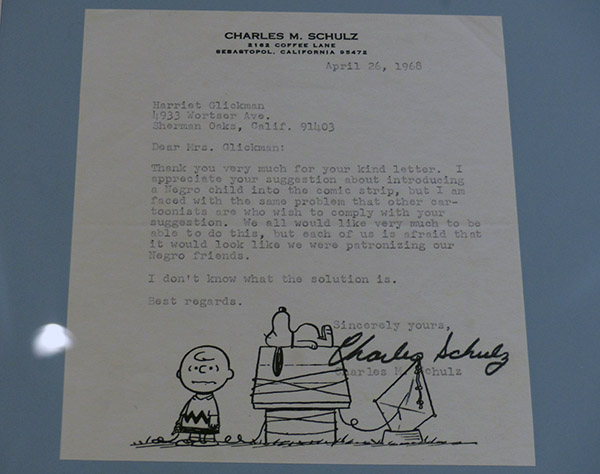
"The Peanuts" comic strip was the first to have a black character. The boy's name is Franklin, and his father fought alongside soldiers in Vietnam. He lost some readers to introducing this character. Scultz did not seem to know how this would be well-received and did not wish to upset a community that he was not familiar with, which is clear in his letters to a reader who wrote to him and asked for the black character to be included.
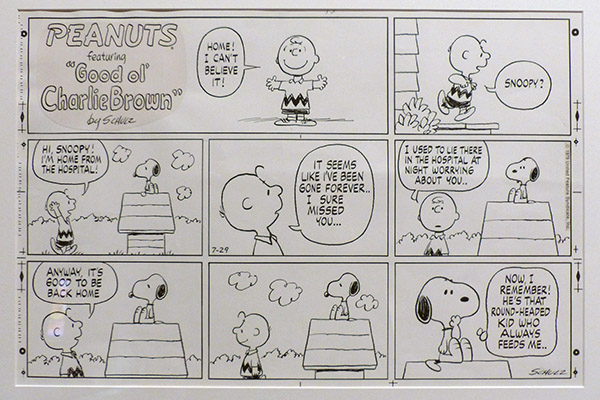
The Snoopy character was depicted as walking and acting more human-like in the early 1970s and became a popular character in the strip. Snoopy became an icon in himself. A stuffed toy Snoopy went to space with the crew of Apollo 10.

Schultz also created strong female characters that defied gender norms. Lucy, the outspoken one, helps to ground Charlie Brown and both exist and become better with one another. Peppermint Patty is a tomboyish female who is the best at sports.
Other themes looked at the Halloween special, religion, fine art, and music. One small area discussed the music of Vince Guaraldi Trio. This band created the music for the "A Charlie Brown Christmas" and is played at Christmas each year.
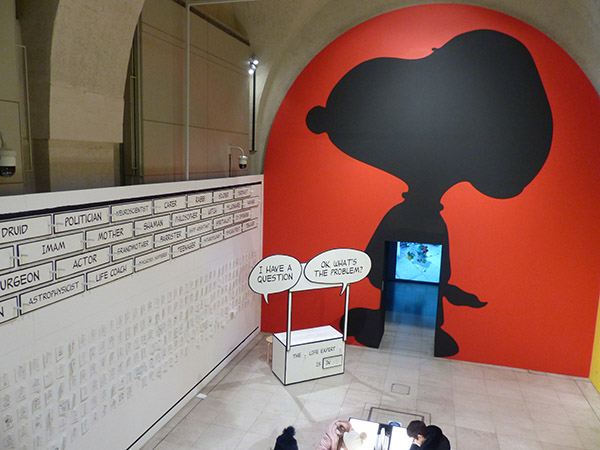
The exhibition also showcased artwork by artists inspired by the characters and comic.
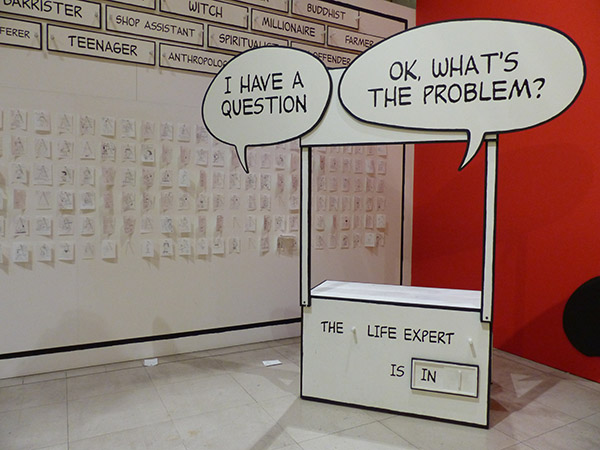
At the end of the exhibition, visitors could use the artwork light boxes to draw out their own "Peanuts" comic strip. They could also read the comic strip books on display to read, take a photograph with Lucy's stand, and visit the gift shop. If you are a fan of the characters and comic strip, then this is a "must-see" exhibition. It's currently on at Somerset House until March 3 and costs 14.00 for a full-price ticket, open daily.

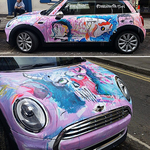
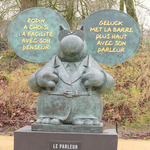
Leave a comment